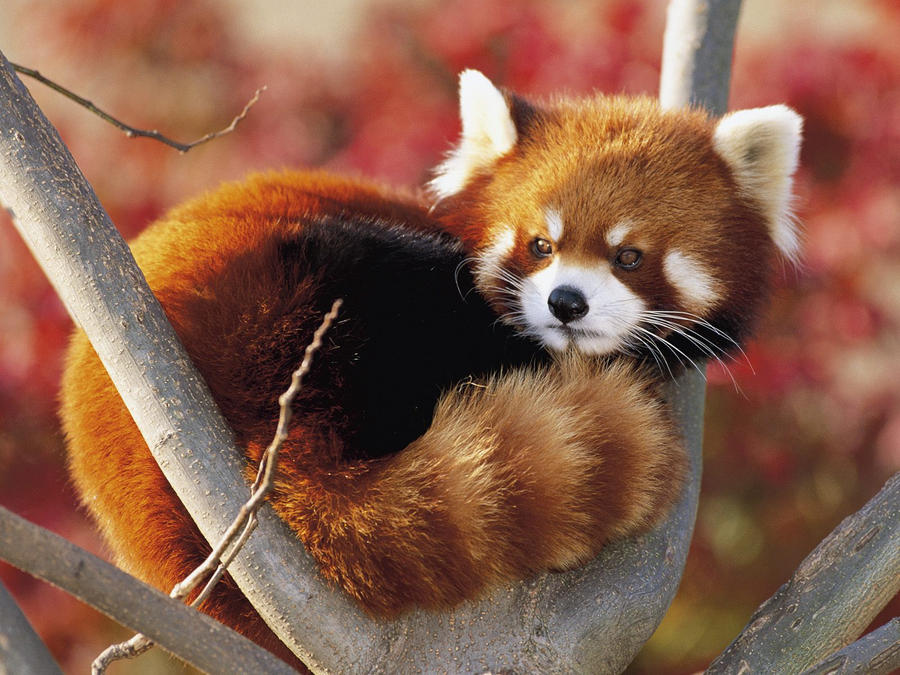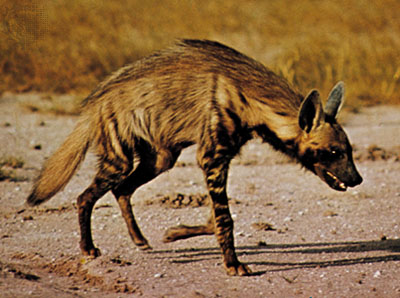Located in China and Nepal, the red panda. or Shining Cat, inhabits tree tops. The red panda was originally placed in the raccoon and bear families, but has recently been moved into it's own family, Ailuridae.
Looking like a raccoon and a panda bear, this animal feeds mainly on bamboo, but will also eat birds, mushrooms, eggs, and other plant material. Being related to the giant panda, the red panda has a modified, wrist bone for grasping and pulling bamboo and climbing down trees. Also, like the panda, they cannot digest cellulose so must consume alot of plant material.


.jpg/300px-Nautilus_pompilius_(head).jpg)


